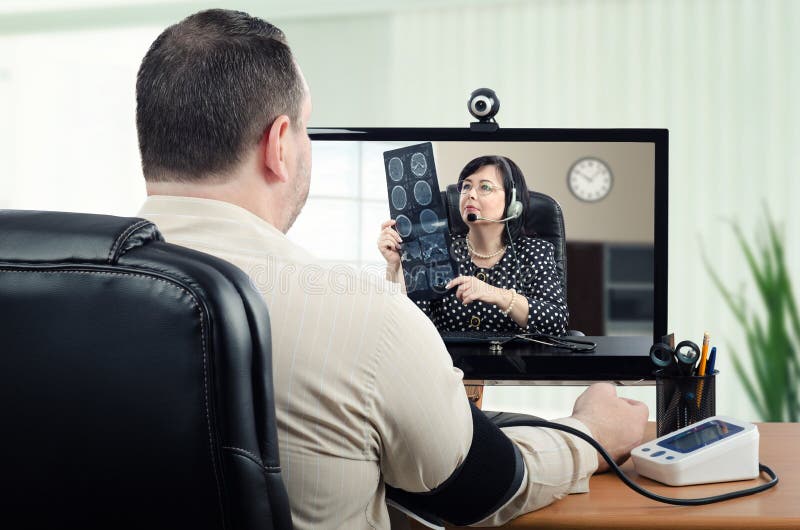Teledoctors vs Conventional Medical Care: Which is Better?
Teledoctors vs Conventional Medical Care: Which is Better?
Blog Article
Exactly How Teledoctors Are Changing Accessibility to Medical Experience Worldwide
In a period where digital technology penetrates every facet of life, the world of health care is going through a transformative change with teledoctors at the forefront. As they link the gap in between patients and clinical specialists across varied geographies, these digital assessments hold the possible to redefine standard medical care systems.
Expanding Reach to Remote Areas
In recent years, telemedicine has actually substantially broadened its scope, damaging down obstacles to healthcare accessibility in underserved and remote areas. This transformative change has actually been driven by improvements in digital modern technology, making it possible for doctor to expand their reach beyond standard geographic constraints. Telemedicine leverages telecoms technology to facilitate appointments, medical diagnoses, and even remote monitoring of people who might otherwise have restricted access to health care centers.
One of the key advantages of telemedicine in remote locations is its ability to connect the gap between experts and patients (teledoctors). In places where medical care infrastructure is sporadic, people can now seek advice from a broad selection of medical experts without sustaining extensive travel. This not only conserves time and sources but also makes sure prompt medical intervention, which can be vital in taking care of chronic conditions or resolving acute medical issues
Furthermore, telemedicine encourages neighborhood doctor by offering methods for cooperation with experts. This boosts the high quality of treatment provided at the area degree and promotes a more integrated approach to individual management. By taking advantage of innovation, telemedicine is not only broadening clinical access yet also reshaping the healthcare landscape in remote areas, fostering a more fair and comprehensive system.
Enhancing Person Ease
Structure on the expansion right into remote locations, telemedicine likewise dramatically boosts individual comfort, using a seamless health care experience. By getting rid of the need for physical travel, people save both time and sources, especially valuable for those with mobility concerns or requiring timetables. Telemedicine platforms permit individuals to speak with doctor from the convenience of their homes, decreasing stress connected with standard in-person sees.
The versatility of scheduling is an additional considerable advantage. Individuals can reserve consultations outside normal office hours, suiting diverse lifestyles and minimizing the demand for time off job or institution. This adaptability is critical for preserving normal health care regimens, especially for those taking care of persistent conditions calling for frequent surveillance.
In addition, telemedicine supplies instant access to professional examinations, which typically entail lengthy waiting durations. By connecting individuals directly to specialists, it eases the delays that commonly accompany recommendations, hence speeding up medical diagnosis and therapy initiation. Such timely interventions can bring about far better health end results and client satisfaction.
Privacy and privacy are kept through protected electronic systems, ensuring that clients really feel comfy discussing sensitive health and wellness concerns. As a result, telemedicine not only expands gain access to yet additionally enhances the overall client experience by prioritizing comfort and access.

Improving Healthcare Efficiency
Telemedicine is substantially improving healthcare efficiency by optimizing and streamlining operations resource allowance. By making it possible for remote appointments, healthcare facilities can decrease individual wait times and raise the number of clients seen daily without congestion physical rooms. This shift permits doctor to maximize their routines and provide more timely care, thus enhancing client results.
Furthermore, telemedicine assists in much better resource administration by lessening the requirement for physical framework and reapportioning these sources in the direction of our website important areas such as emergency services and inpatient care. teledoctors. Telemedicine platforms also permit smooth assimilation of digital health and wellness records, which enhances interaction in between healthcare professionals and ensures that patient info is easily easily accessible, additional decreasing hold-ups in therapy
Furthermore, telemedicine equips healthcare experts to collaborate better throughout geographical boundaries, bring about even more extensive treatment for individuals. For instance, specialists can give real-time appointments to medical care suppliers, permitting quicker decision-making and minimizing unnecessary references. By leveraging innovation to connect the gap between service providers and clients, telemedicine not just increases the efficiency of medical care distribution yet likewise boosts the quality of care that clients obtain. This improvement is essential in addressing the raising need for health care solutions internationally.
Reducing Healthcare Prices

In addition, telemedicine systems can reduce the problem on physical health care facilities. By handling non-urgent cases remotely, doctor can allot resources more efficiently, enabling better monitoring of essential instances that require in-person attention. This maximized source appropriation can lead to a decrease in operational expenses, eventually equating to decrease costs for patients.

Assisting In Global Medical Collaboration
The development of telemedicine has opened up unprecedented methods for global clinical collaboration, making it possible for healthcare specialists to connect throughout borders with simplicity. This technical improvement permits the seamless exchange of clinical knowledge, ideal practices, and innovative treatments, cultivating a collaborative atmosphere that goes beyond geographical limitations. Physicians and experts can currently talk to peers from various parts of the world, accessing to diverse best site viewpoints and know-how that can enhance individual care and results.
Telemedicine systems offer a digital space where multidisciplinary teams can assemble to talk about complicated instances, share diagnostic understandings, and devise thorough treatment strategies. Such collaboration is especially valuable in dealing with uncommon diseases and problems that call for customized knowledge not easily offered in certain regions. By leveraging telemedicine, healthcare organizations can develop global networks that help with continual education and learning and training, making sure that clinical professionals stay updated with the most recent innovations.
Furthermore, telemedicine improves collective research study initiatives, permitting clinical and academic researchers to conduct joint studies and trials without the constraints of physical proximity - teledoctors. This global approach increases the rate of clinical discovery and the development of new therapies, ultimately adding to a much more interconnected and reliable worldwide medical care system
Verdict
The surge of teledoctors is changing global healthcare by damaging down geographical barriers, thus expanding access to medical expertise. This technical improvement enhances patient ease, enhances overall medical care effectiveness, and adds to cost reduction. In addition, it promotes international cooperation among physician, facilitating an international exchange of understanding. By guaranteeing fair access to clinical sources for underserved populations, teledoctors play a crucial role in advertising health equity and boosting the high quality of care worldwide.
Telemedicine leverages telecoms technology to assist in consultations, diagnoses, and also remote surveillance of patients who might otherwise have restricted accessibility to medical care facilities.
Building on the growth right into remote locations, telemedicine also considerably improves person convenience, providing a seamless health care experience. By making it possible for remote appointments, health care facilities can minimize person wait times and increase the number of clients seen daily without overcrowding physical areas.In addition, telemedicine encourages medical care professionals to collaborate much more successfully throughout geographical borders, leading to even more thorough treatment for people. By leveraging modern technology to connect the space between providers and patients, telemedicine not only raises the performance of healthcare site link delivery however additionally boosts the top quality of treatment that individuals get.
Report this page